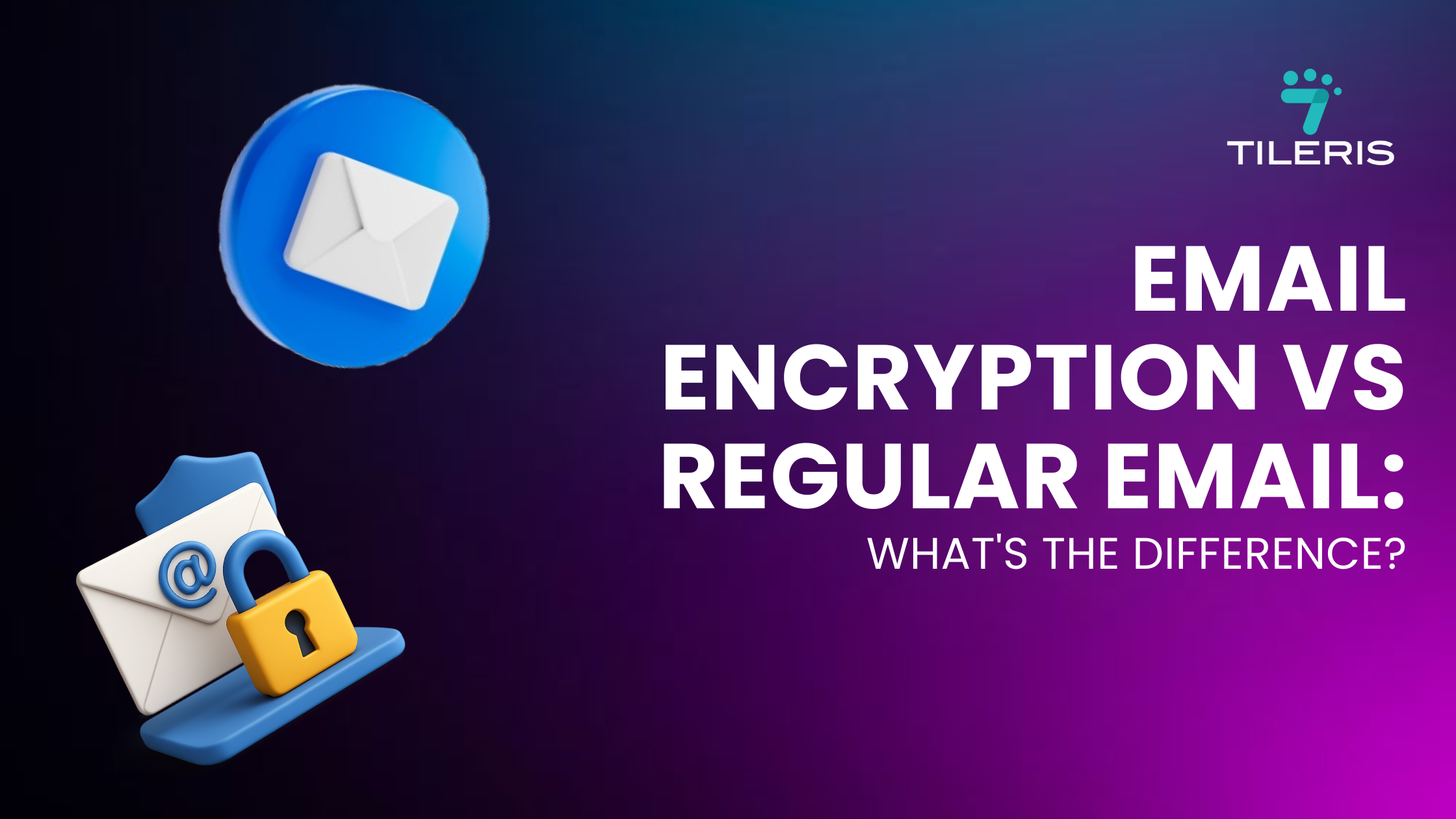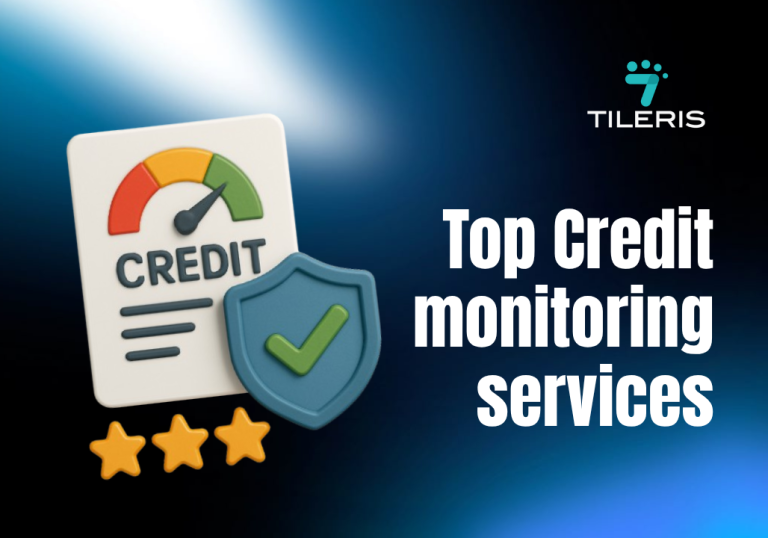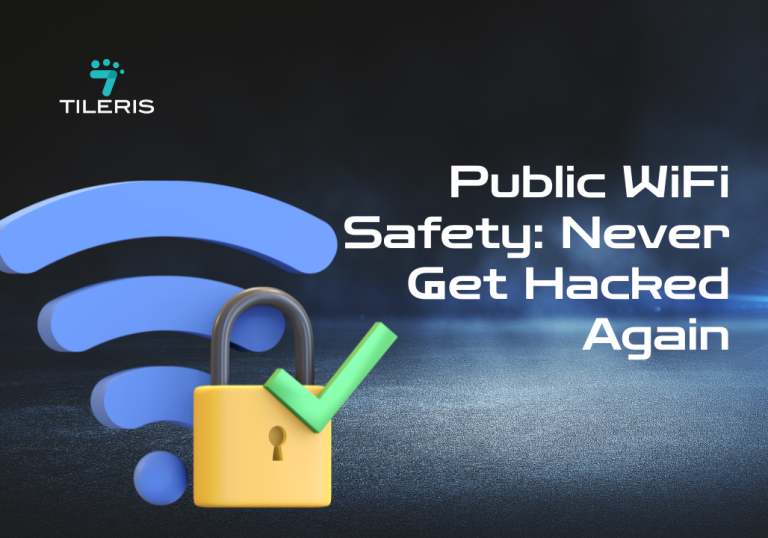Email Encryption Vs Regular Email: What’s The Difference
Introduction
We all send emails. Hundreds, maybe even thousands of them. From quick hellos to sharing sensitive documents, our inboxes are digital diaries of our lives.
But have you ever stopped to think about what happens to those emails once you hit “send”? Are they flying through the internet like a protected secret, or are they more like a postcard, visible to anyone who happens to glance at it?
That’s the heart of the debate: Email Encryption vs Regular Email. This isn’t some abstract tech-nerd question, it’s about your privacy, your security, and ultimately, your peace of mind.
In this guide, we’ll break down what really happens behind the scenes when you hit send, and why understanding the difference between encrypted and unencrypted email might change how you communicate online.
The Everyday Email: A Digital Postcard?
Imagine for a moment you’re sending a physical postcard. You write your message, slap on a stamp, and drop it in the mailbox. Now, think about who might see that postcard before it reaches its destination. The postal worker, maybe someone at the sorting facility, perhaps even a curious neighbor if it’s left on their doorstep by mistake. Everyone along the route can read it.
That, in a nutshell, is how regular, unencrypted email works. When you compose an email in Gmail, Outlook, Yahoo Mail, or any other standard email service, and send it without any special security measures, it travels across the internet in what’s called “plain text.” This means its content is completely readable to anyone who might intercept it.
“But who would intercept my emails?” you might wonder. It’s a fair question, and for many everyday communications, the risk might seem low. However, consider the journey your email takes. It bounces through various servers, routers, and networks, often crossing multiple geographical boundaries. Each point along that journey is a potential point of interception.
Think of cybercriminals, state-sponsored actors, or even just opportunistic snoopers. Just like a physical letter can be opened and read, a digital email can be “sniffed” or intercepted by someone with the right tools and intentions. This isn’t just theoretical. Data breaches and compromised accounts are daily headlines.
In 2024 alone, there were over 3,000 publicly reported data breaches in the US, exposing billions of records, many of which contained sensitive information harvested from unsecure communications.
An unencrypted email is essentially a digital billboard, anyone with the means to look can read it. While most of our daily chatter might not seem like a big deal, imagine sending your bank account details, your social security number, or confidential business proposals through an unencrypted channel. You’re essentially handing over the keys to your digital kingdom.
So, while sending a quick “Hey, what’s up?” email without encryption isn’t going to bring down the world, you’re making a fundamental decision about how much you value the privacy of your digital conversations.
Encryption: Your First Line of Defense
Now, let’s flip the script. Imagine you need to send a highly sensitive letter, perhaps a confidential contract or personal medical information. You wouldn’t send that on a postcard, would you? Instead, you’d put it in a strong, sealed envelope, maybe even use a special courier service that guarantees secure delivery.
Email encryption is that digital sealed envelope, but far more sophisticated. When you encrypt an email, its content is transformed into a jumbled, unreadable mess of characters; what tech folks call “ciphertext.” This transformation happens through complex mathematical algorithms, like a secret code that only the intended recipient can decipher.
How does it work? Think of it like this:
- The Sender’s Key (Public Key): When you want to send an encrypted email, you use the recipient’s “public key.” This key is, as the name suggests, public. Anyone can have it. It’s used to lock the message.
- The Recipient’s Key (Private Key): The recipient has a corresponding “private key,” which they keep secret and secure. This is the only key that can unlock the message that was locked with their public key.
It’s an ingenious system. Even if someone intercepts the encrypted email, all they see is gibberish. Without the private key, it’s virtually impossible to unscramble the message and read its contents.
The power of encryption lies in its ability to render stolen data useless. Even if a hacker manages to breach a server and snatch your encrypted emails, they’re left with an indecipherable mess. It’s the ultimate defense in depth.
Not All Encryption Works the Same Way
This is where things get a little more nuanced, but stay with me, it’s important. Just like there are different types of locks for different levels of security, there are different layers of email encryption.
TLS (Transport Layer Security)
Most major email providers today, think Google, Microsoft, Yahoo, Apple use TLS (Transport Layer Security) encryption by default. This is fantastic news! TLS encrypts the connection between your device and the email server, and importantly, between email servers as your message travels across the internet.
Think of it as a secure tunnel. While your email is moving through that tunnel, it’s protected. If someone tries to intercept it during transit, they’ll only see the jumbled ciphertext. This is a massive improvement over completely unencrypted email and has significantly boosted general email security over the past decade.
However, there’s a crucial caveat. Once your email arrives at the recipient’s email server, it’s typically decrypted and stored in plain text. This means that if that server were to be breached, your emails, while safe in transit, would be vulnerable at rest.
It’s like your secure courier drops off your sealed letter, but the recipient then leaves it unsealed on their desk for anyone to read.
End-to-End Encryption (E2EE)
This is the gold standard for email privacy. End-to-End Encryption (E2EE) means that your email is encrypted on your device before it leaves, and it remains encrypted until it reaches the recipient’s device, where it’s decrypted. Only you and the recipient have the keys to unlock that message. Not even your email provider can read the content of your email.
Imagine our sealed letter again. With E2EE, it’s sealed by you at your home, and only your friend can unseal it at their home. The courier (your email provider) sees nothing but the locked box.
Prominent examples of E2EE for email include:
- PGP (Pretty Good Privacy): This has been around for decades and is a favorite among privacy advocates and journalists. It requires a bit more technical setup, but offers robust security.
- S/MIME (Secure/Multipurpose Internet Mail Extensions): Often used in corporate environments, S/MIME integrates with many email clients and relies on digital certificates.
- Secure Email Services: A growing number of email providers are building E2EE directly into their platforms, making it easier for everyday users. Services like Proton Mail and Tuta are built from the ground up with E2EE as a core feature.
While E2EE offers unparalleled security, it’s not without its challenges. Both sender and recipient need to be using compatible encryption methods, and the setup can sometimes be less user-friendly than standard email. However, for truly sensitive communications, the extra effort is absolutely worth it.
Why Does This Matter to YOU?
Beyond the technical jargon, let’s bring it back to your daily life. Why should you care about “email encryption vs. regular email”?
Protecting Your Personal Information
Think about the emails where you share your home address for a package, your phone number, or even details about your health. Without encryption, that information is out there. Identity theft is a real threat, and unencrypted emails are a prime target for opportunistic criminals looking to piece together your digital identity.
Safeguarding Financial Details
Ever emailed your bank details, credit card number (please don’t!), or discussed investments via email? If it’s unencrypted, you’re essentially shouting that information into a crowded room. Financial fraud is rampant, and securing your financial communications is paramount.
Business Confidentiality
For professionals, this is non-negotiable. Sharing client lists, intellectual property, strategic plans, or employee data via unencrypted email is a recipe for disaster.
Data breaches can lead to massive financial losses, reputational damage, and legal penalties. Regulatory bodies like GDPR (General Data Protection Regulation) in Europe and HIPAA (Health Insurance Portability and Accountability Act) in the US mandate strong data protection, and email encryption is a cornerstone of compliance.
Preventing Phishing and Spoofing
When emails are encrypted and digitally signed, it becomes much harder for attackers to “spoof” an email (pretend to be someone they’re not) or launch sophisticated phishing attacks. The encryption process verifies the sender’s identity, adding a layer of trust.
Maintaining Your Digital Footprint
In an increasingly connected world, our digital footprint is vast. Every unencrypted email contributes to that footprint, potentially exposing more of your life than you intend. Encryption allows you to control who sees what, helping you maintain a degree of digital sovereignty.
Consider this, In 2023, the average cost of a data breach was $4.45 million, a significant portion of which is attributed to compromised email systems. These aren’t just numbers; they represent lost trust, legal battles, and massive reputational damage.
Making the Smart Choice: When to Encrypt
So, how do you decide when to use encryption? Here’s a simple rule of thumb:
Always ask yourself: “If this email were to be made public, would I be comfortable with that?”
If the answer is anything other than a resounding “yes,” then it’s a candidate for encryption.
Here are scenarios where email encryption isn’t just a good idea, it’s crucial:
- Sending any personal identifying information (PII): Social Security numbers, driver’s license numbers, passport details, bank account numbers, credit card numbers.
- Discussing health information: Medical conditions, diagnoses, prescriptions, insurance details.
- Sharing legal documents: Contracts, wills, court documents.
- Exchanging financial details: Investment strategies, tax documents, salary information.
- Business communications with sensitive data: Trade secrets, product designs, client data, employee records, strategic plans.
- Journalistic or whistleblower communications: Protecting sources and sensitive information.
- Any communication where privacy is paramount: Discussions about personal relationships, confidential agreements, or anything you simply don’t want anyone else to read.
The Human Element: It’s About Trust
Ultimately, the difference between email encryption and regular email boils down to trust. When you send a regular email, you’re placing a lot of trust in the various networks and servers it travels through, and in the security practices of your email provider. While TLS does offer significant protection in transit, it doesn’t guarantee your email is safe at rest on someone else’s server.
When you use end-to-end encryption, you’re taking control of your data. You’re saying, “This information is private, and only the intended recipient and I should ever see it.” It’s an empowering choice in a world where our digital lives are constantly under scrutiny.
The good news is that using encryption is becoming easier. Many services are integrating it seamlessly, and there are user-friendly tools available for those who want to take their security into their own hands. Don’t wait for a data breach to understand the value of a locked digital letter.
Start thinking about your email like the valuable, private communication it should be. Your digital secrets deserve nothing less.
Conclusion
At the heart of it, the debate around email encryption vs regular email isn’t just about technology, it’s about trust, safety, and control over your own communication. In a world where data breaches make headlines and digital privacy is constantly under threat, sticking with unsecured email is like leaving your diary open on a park bench. You might get lucky. Or you might get burned.
Privacy shouldn’t be a luxury. It should be the default. And the sooner we treat it that way, the safer we all become.
Ready to Lock Down Your Digital Life?
You’ve explored the crucial difference between an open postcard and a securely sealed letter in your inbox. Now, it’s time to take control and ensure your digital secrets stay private.
Don’t leave your email security to chance.
Download your free Tileris Security Checklist today! It’s packed with simple, actionable steps you can implement right now to boost your online protection, perfect for anyone curious about strengthening their defenses with tools like TLS, S/MIME, or PGP. It’s your first step towards a more secure digital footprint.
Feeling a bit overwhelmed or just want to chat through your specific needs?
Request a free consultation with the Tileris team. We’re happy to walk you through your options, demystify the tech jargon, and help you choose the right approach for your unique security requirements.
And for those who are truly curious about the cutting edge of digital defense:
Request a demo to see how Tileris AI Agents work in real-time. Discover what smarter, proactive security looks like when powered by modern artificial intelligence. Just drop us a note through our contact form, and we’ll show you how Tileris is redefining what’s possible in online protection.







